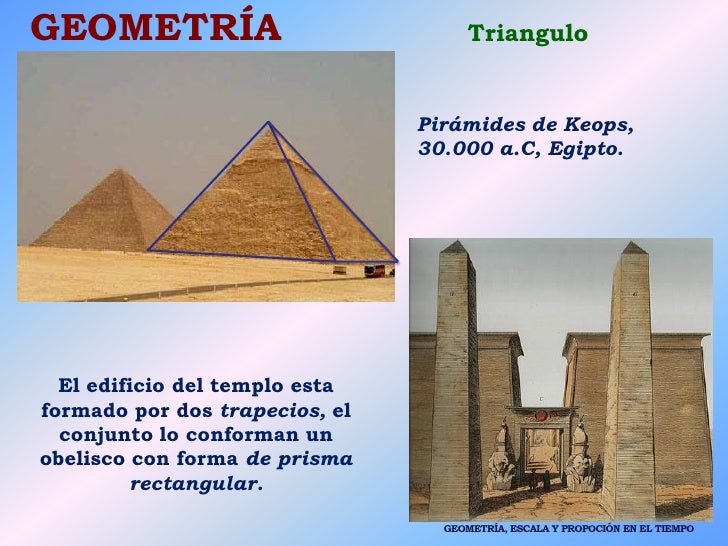Geometry in Egypt
Both Herodotus and Aristotle place the origin of geometry in the Egyptian civilization. While Herodotus maintains that this arose as a practical necessity to redraw the boundaries of the earth, after the annual flooding of the Nile River, Aristotle attributes the emergence to an idle priestly class.
The certain thing is that centuries before the Egyptian civilization, varied properties and geometric calculations were discovered, used and applied. However, the development of geometry is driven in the Egyptian civilization, and that is why many consider Egypt, cradle of geometry.
The development of geometry in Egypt is revealed in the papyrus of Ahmes. This papyrus dates approximately from 1650 a.C. and it contains 87 mathematical problems with basic arithmetic questions, fractions, calculation of areas, volumes, progressions, proportional distributions, rules of three, linear equations and basic trigonometry.
The Egyptian geometry next to the Babylonian one, was the precursor of the powerful Greek geometry. The first Greek mathematicians (Thales of Miletus, Pythagoras, ...) traveled through Babylon and Egypt before making their treaties.
In the Egyptian architecture, true wonders were developed in which the Egyptians applied their knowledge of arithmetic and geometry. For example, in the orientation of their temples and pyramids they had to perform very accurate calculations.



Comentarios
Publicar un comentario